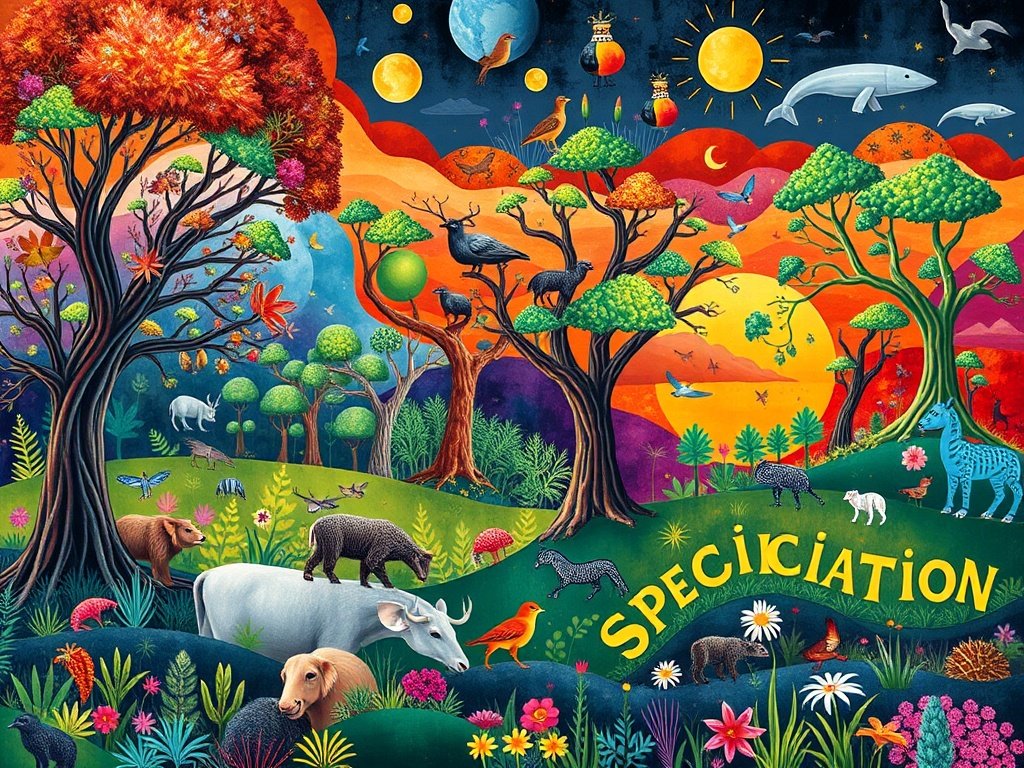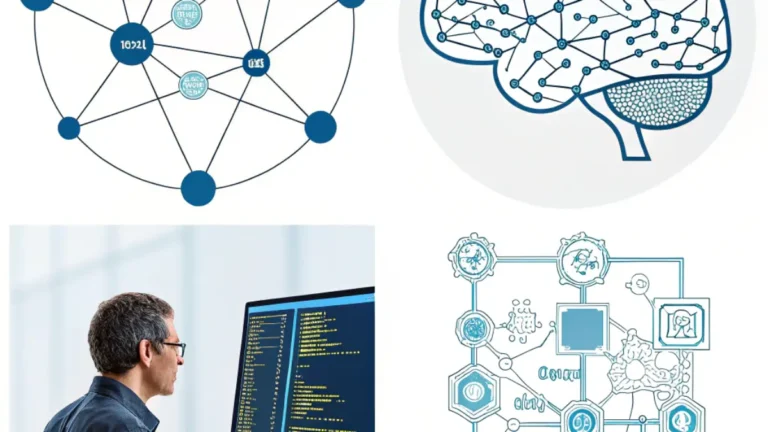
Understanding Speciering: Nature’s Blueprint for Biodiversity
What is Speciering and Why It Matters?
Speciering, derived from the root “species,” refers to the intricate biological process of speciation — the formation of new and distinct species in the course of evolution. It lies at the core of how life diversifies on Earth, giving rise to the immense variety of organisms we see today. This isn’t merely a scientific concept locked in textbooks; it is an ongoing natural phenomenon that has shaped ecosystems, contributed to human evolution, and continues to be pivotal in conservation efforts. As the environment changes and organisms adapt, speciering ensures life’s continuity by creating new survival strategies encoded in species’ genetics. Understanding this process isn’t just for biologists; it’s essential for anyone invested in nature, sustainability, or evolution.
The Biological Foundation of Speciering
At its core, speciering is driven by genetic divergence. When populations of the same species become isolated — whether geographically, behaviorally, or reproductively — their genetic codes begin to change in response to distinct environmental pressures. Over time, these changes accumulate to such an extent that interbreeding becomes impossible, resulting in two entirely separate species. This is not just a slow drift but a dance of mutation, adaptation, and selection that occurs across generations.
Types of Speciering: Not One Size Fits All
The process of speciering can take many forms, each depending on how populations get separated or how they evolve. Here are the four primary types:
- Allopatric Speciering: Caused by physical separation like mountains, rivers, or distance.
- Sympatric Speciering: Occurs without physical barriers — often through behavioral or ecological niches.
- Parapatric Speciering: Neighboring populations evolve into distinct species while maintaining contact.
- Peripatric Speciering: A small, isolated population diverges from a larger one, often faster.
Each type reveals the incredible flexibility of nature to invent new forms of life in response to diverse circumstances.
Real-World Examples of Speciering
Speciering isn’t a concept of the past. It’s happening now. Consider the Galápagos finches, famously studied by Charles Darwin. These birds evolved varying beak shapes based on diet and habitat, eventually diverging into multiple species. Another ongoing case is observed in apple maggot flies in North America, where some populations have begun adapting to new host plants and are diverging genetically — a modern example of sympatric speciering.
Genetics Behind the Evolutionary Curtain
Beneath the surface of speciering lies a fascinating world of genes, alleles, and chromosomes. Mutations — random changes in DNA — are often the seeds of new traits. Natural selection acts like a sieve, favoring traits that enhance survival. Over time, these favored traits accumulate and define the new species. Genes related to color, mating behavior, and environmental tolerance are often the first to diverge, setting the stage for more profound genetic differences.
Environmental Role in Speciering
Climate, Habitat, and Resource Availability
Environmental factors play a vital role in how speciering unfolds. Temperature, food sources, and climate patterns can dictate which traits become favorable in a given habitat. For instance, as climate change alters environments, species are forced to adapt — often creating isolated pockets of populations that begin diverging.
- Tropical rainforests, with their diverse niches, are hotspots for speciering.
- Arctic regions see slower but profound genetic divergence due to extreme pressures.
- Urban environments are now contributing to modern-day speciation events.
How Fast Does Speciering Occur?
One common misconception is that speciering always takes millions of years. While it often does, recent studies have shown that under intense environmental pressure or isolation, new species can emerge in just a few hundred generations. This means speciation isn’t just ancient history; it can be observed in our lifetime, especially in fast-breeding organisms like insects or bacteria.
Speciering vs Evolution: What’s the Difference?
It’s easy to confuse speciering with evolution, but they are not interchangeable. Evolution refers broadly to the change in inherited traits over generations, while speciering is the branching process where one lineage splits into two or more species. In essence, speciering is one outcome of evolution — a dramatic one that creates entirely new paths on the tree of life.
Human Speciering: Are We Still Evolving?
This is a hotly debated topic. While we remain one species biologically, genetic variations across populations are significant. If humans were to become isolated — say, colonizing Mars — speciering could theoretically occur. Already, genetic adaptations to high altitude, lactose tolerance, or disease resistance show that micro-evolution is active in our species. The real question is whether our global interconnectedness will slow or accelerate future human divergence.
Comparing the Types of Speciering
| Type of Speciering | Trigger | Example |
| Allopatric | Geographic isolation | Darwin’s finches |
| Sympatric | Behavioral/ecological shift | Apple maggot flies |
| Parapatric | Partial isolation | Grass species near mines |
| Peripatric | Small group isolation | Island bird populations |
The Role of Sexual Selection in Speciering
When Mating Preferences Drive Divergence
Sexual selection, where mates choose based on traits like coloration, song, or display, often contributes to speciering. For example, female birds may prefer brighter males, leading to exaggerated traits over time that eventually define a new species. Behavioral isolation through such preferences is a common pathway, especially in birds, fish, and insects.
The Dark Side: When Speciering Fails
Not all divergence leads to success. Sometimes new species cannot sustain themselves, either due to low genetic diversity or environmental pressures. This results in extinction rather than diversification. Hybrid zones — where species try to mix again — also test the strength of speciering. If hybrids are weak or sterile, the separation holds; if not, speciation might reverse.
Table: Speciering Success vs. Collapse
| Outcome | Description | Example |
| Successful Speciation | Viable new species sustained | Cichlid fish in African lakes |
| Hybrid Collapse | Re-merging due to fertile hybrids | European toad populations |
| Extinction Event | New species dies out quickly | Isolated island rodent species |
Why Speciering Matters in Conservation
Recognizing ongoing speciering helps conservationists decide what to protect. Preserving habitats where species are currently diverging is crucial for maintaining biodiversity. Protecting just “species” might miss the rich micro-evolutionary activity beneath the surface. Conservation policies increasingly factor in subspecies and genetically distinct populations to preserve the evolutionary process itself.
Technological Advances in Studying Speciering
Modern tools like DNA sequencing, CRISPR gene editing, and satellite-based habitat analysis have revolutionized our ability to detect and understand speciering. Scientists can now track divergence in real-time, identify hidden species, and even simulate speciation in lab settings. This opens doors not only for academic study but for practical applications in agriculture, medicine, and climate resilience.
Conclusion: Speciering Is Life’s Endless Reinvention
Speciering is more than just a scientific term — it’s the language of life’s creativity. It reveals how organisms adapt, survive, and diversify in an ever-changing world. As we face rapid environmental shifts, understanding and preserving this natural process becomes a moral and ecological imperative. The study of speciering teaches us not only where we come from, but how life continues to evolve. It’s nature’s way of saying, “Change is not optional; it is essential.”
FAQs
1. Can humans undergo speciering in the future?
Yes, theoretically. If populations remain isolated over generations, particularly in vastly different environments (e.g., Earth vs. Mars), speciering could occur.
2. How is speciering observed in real-time?
Rapidly reproducing organisms like bacteria or insects can show genetic divergence in laboratory or environmental conditions, offering a live view of the process.
3. Is speciering always beneficial to biodiversity?
Not always. While it adds diversity, failed speciation or hybrid collapse can reduce genetic integrity or waste conservation resources if misunderstood.





